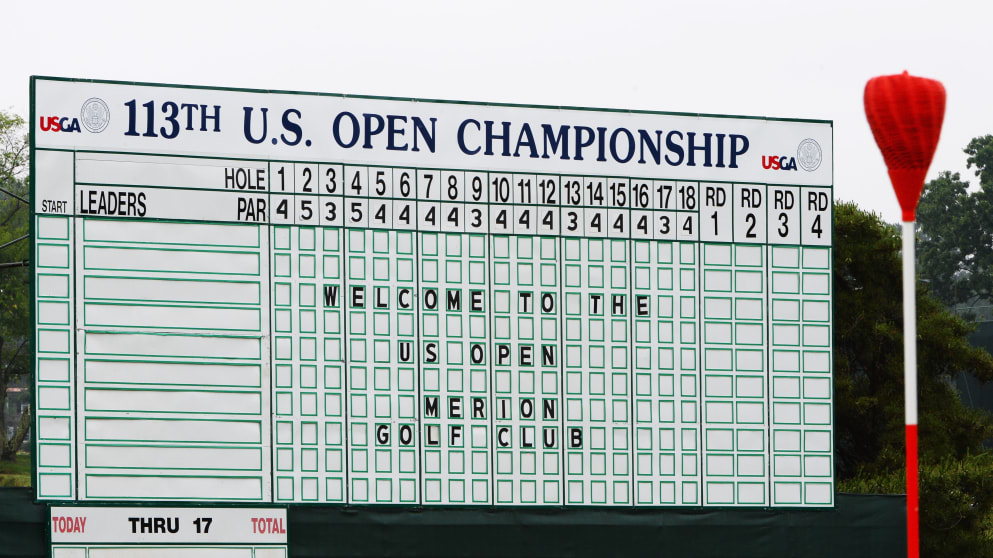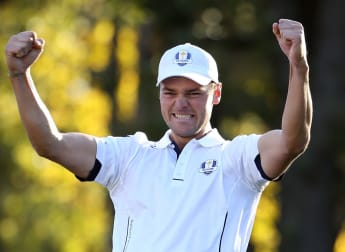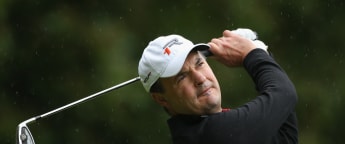The US Open returns to Merion for the first time in 32 years this week, bringing Major Championship golf back to a course steeped in history.

It was here in 1930 that Bobby Jones completed the “Grand Slam” with his US Amateur triumph, and Ben Hogan won the 1950 US Open just 16 months after surviving a near fatal car crash, a victory immortalised by Hy Peskin’s iconic photo of his one iron approach to the 18th on the final day, and then in 1971 Lee Trevino outplayed Jack Nicklaus in an 18 hole play-off.
But despite holding the distinction of hosting more USGA Championships than any other club in America (17), Merion has not hosted a US Open since David Graham took the title in 1981.
Quite simply, it was considered too short for the modern game while the 111 acre site could not host the infrastructure demanded for a Major Championship in today’s era. But some creative thinking, including local residents using their property for corporate infrastructure and using the West Course for practice range and player lounge, has brought the US Open back to the Philadelphia area with all 25,000 tickets each day sold out for Merion’s fifth US Open.
“This place is just magical,” said Mike Davis, USGA Executive Director, at media day earlier in the year. “In so many ways, it’s historical. It’s an architectural treasure. From a golf standpoint, I think you could easily say it’s a landmark.”
Merion, at 6,996 yards, is still considered short for today’s elite players - the 2013 US Open will be the first contested at fewer than 7,000 yards since Shinnecock Hills played the same length in 2002.
Yet Merion’s blend of short and long holes, challenging green complexes, deep bunkers and challenging rough should, as Davis said, provide the kind of stern test the USGA wants for its most visible national championship.
Merion has some of the shortest par fours among post-World War II era US Open venues. Five of the 12 par fours will measure under 400 yards, and another three will play between 403 and 430, which is short for today’s best golfers.
On the other hand, Merion also features four par fours longer than 460 yards and three of the four par three holes can play more than 235 yards; the lone exception being the 115-yard 13th hole. And the course concludes with the 521-yard, par four 18th, a hole Davis called the “toughest finishing hole in all of the US Opens.”
Inevitably the weather will have a bearing on the scores, with Davis stating in April that the difference between a hard and fast course versus one softened by rain could be as much as 18-20 shots. After the weather of the last few days with the remnants of Tropical Storm Andrea pummelling the course with 3½ inches of rain on Friday and more rain overnight on Sunday, there is not going to be much run.
Two-tee starts are now commonplace in professional golf and have been part of the US Open since 2001 but this time players will tee off on the first and 11th holes due to the unique layout of Merion.
While the club’s first is about as close to the clubhouse as it can possibly be, the tenth is nearly 1,000 yards away, across Ardmore Avenue, so the USGA decided to use the more convenient 11th as the second starting hole.
From the practice range on Merion’s West Course, players will therefore be shuttled to a drop-off point adjacent to the 14th hole, where they will enter the property by crossing a bridge. From there, it’s a short walk to the first and 11th to get their US Open underway.









